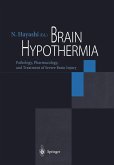The use of hypothermia for a variety of therapeutic purposes has a long and erratic history. Hypothermia was used for protection and preservation of the heart and entire organism during planned operative ischemia. Attempts were also made to use hypothermia for resuscitation from cardiac arrest and for management of head trauma.
Therapeutic Hypothermia will provide a review of the subject, in particular, resuscitative hypothermia and include known mechanisms of action and results from both mechanistic and outcome laboratory studies and clinical trials. Cooling methods and potential side effects of hypothermia will be addressed as well as recommendations for future laboratory and clinical research.
This volume will be of interest to both the researcher interested in therapeutic hypothermia as well as the clinician interested in the potential use of therapeutic hypothermia in their patient population.
Samuel A. Tisherman, MD', Fritz Sterz, MD~ '~niversit~ of Pittsburgh, Pittsburgh, PA, USA 2~edical University of Vienna, Vienna, Austria The use of hypothermia for a variety of therapeutic purposes has a long and erratic history. Hippocrates recommended the use of topical cooling to stop bleeding. Fay used cooling of the extremities for patients with tumors in the 1930s. It wasn't until the 1950s, when the effects of hypothermia on systemic oxygen metabolism became better defined, that systemic hypothermia became a commonly used modality, particularly for cardiac surgery. Hypothermia was used for protection (treatment before the insult) and preservation (treatment during the insult) of the heart and entire organism during planned operative ischemia. Shortly thereafter, attempts were made to use hypothermia for resuscitation (treatment after the insult) from cardiac arrest and for management of head trauma. At that time, it was felt that moderate hypothermia (28-32OC) was needed. This was difficult to achieve and manage. Multiple complications were noted. Consequently, therapeutic, resuscitative hypothermia lay dormant for many years while mild (32-35°C) to moderate hypothermia became common for many cardiothoracic and neurosurgical procedures. In the early 1990s, it was found that mild hypothermia, even after cardiac arrest, had benefit for the brain. Similar results were found with head trauma. This lead to a burst of enthusiasm for research into resuscitative hypothermia for a variety of insults, most of which have tissue ischemia as a major component.
Therapeutic Hypothermia will provide a review of the subject, in particular, resuscitative hypothermia and include known mechanisms of action and results from both mechanistic and outcome laboratory studies and clinical trials. Cooling methods and potential side effects of hypothermia will be addressed as well as recommendations for future laboratory and clinical research.
This volume will be of interest to both the researcher interested in therapeutic hypothermia as well as the clinician interested in the potential use of therapeutic hypothermia in their patient population.
Samuel A. Tisherman, MD', Fritz Sterz, MD~ '~niversit~ of Pittsburgh, Pittsburgh, PA, USA 2~edical University of Vienna, Vienna, Austria The use of hypothermia for a variety of therapeutic purposes has a long and erratic history. Hippocrates recommended the use of topical cooling to stop bleeding. Fay used cooling of the extremities for patients with tumors in the 1930s. It wasn't until the 1950s, when the effects of hypothermia on systemic oxygen metabolism became better defined, that systemic hypothermia became a commonly used modality, particularly for cardiac surgery. Hypothermia was used for protection (treatment before the insult) and preservation (treatment during the insult) of the heart and entire organism during planned operative ischemia. Shortly thereafter, attempts were made to use hypothermia for resuscitation (treatment after the insult) from cardiac arrest and for management of head trauma. At that time, it was felt that moderate hypothermia (28-32OC) was needed. This was difficult to achieve and manage. Multiple complications were noted. Consequently, therapeutic, resuscitative hypothermia lay dormant for many years while mild (32-35°C) to moderate hypothermia became common for many cardiothoracic and neurosurgical procedures. In the early 1990s, it was found that mild hypothermia, even after cardiac arrest, had benefit for the brain. Similar results were found with head trauma. This lead to a burst of enthusiasm for research into resuscitative hypothermia for a variety of insults, most of which have tissue ischemia as a major component.








